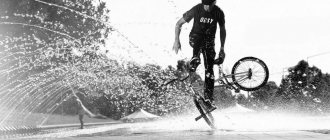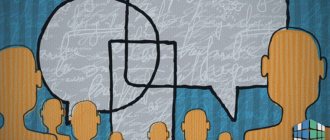What determines a person’s life outcome and success? Of course, these are the skills and abilities that he possesses. At the same time, it is extremely important to understand that they can and should be mastered and developed at any age, because the more we are able to do, the more different goals we can achieve. Today we want to talk about how skills and abilities are formed and what stages this process consists of, as well as give several recommendations for their development that everyone can use.
A little about skills and abilities
Scientific minds around the world are still engaged in serious debate about what constitutes the top of the hierarchy in the system of developing new knowledge, skills and abilities in a person that characterize his intellectual development. Some researchers say that skills are more important, while others say that skills are more important. Let's look at the differences.
A skill can be called the highest level of formation of any action - when it is performed automatically and a person does not need to be aware of the intermediate stages. A skill is the ability to act, which is performed consciously and has not yet reached the highest level of formation.
For example, when a person learns to perform some action with a specific goal, he first does it as consciously as possible, focusing on each intermediate step, and each step is stored in consciousness. The process of mastering the action is realized and developed. This means that skill is formed first.
Further, when a person systematically trains and continues to work on himself, his skill improves. The time to perform an action is reduced, and some of the intermediate stages begin to be performed unconsciously, automatically. And here we can already say that a full-fledged skill in performing an action is being formed.
Based on the above, we can conclude that a skill is an improved form of skill. If, for example, a child learns to read, it is initially difficult for him to “make” words from individual letters, and mastering this skill takes a lot of effort and time. But an adult, in the process of reading, reads letters and words automatically, controlling only the semantic aspect.
This means that thanks to long and persistent exercises and training, the ability to read has turned into a skill. The development of speech skills in preschoolers, the development of creative and social skills, the formation of business writing skills, etc. occur in exactly the same way.
A skill is an activity formed through repeated repetition and bringing it to automatism. An indicator that a person has a skill is that before performing an action, he does not think in advance about how exactly he will perform it, but when performing it, he acts accurately and quickly.
The formation and development of skills and abilities is a fairly long process that takes a lot of time. This often takes several years if we are talking about a complex action. As for improving skills and abilities, this generally occurs throughout a person’s entire life. This is what psychology says about skills and abilities.
Basic approaches to studying habits from a psychological point of view
Human activity in any form, internalized or externalized, can be represented in terms of various actions: Skills, habits. In most cases, abilities, skills and habits are considered only as an external component. However, we are also talking about thinking skills, the ability to solve mental problems, and, finally, the habit of making sense of everything. Therefore, in psychology, the unity of the structure of external and internal activity is considered especially significant. Our thoughts are a reflection of the structure of external actions that served as the basis for their implementation.
+A skill is a firmly established way of performing actions, characterized by a high degree of automation and achieved through repetition or solving similar problems. There are motor, thinking, sensory and behavioral skills. Motor skills always involve muscle movements, be it the movements of the arms or the vocal cords. Thinking skills are developed through solving mental problems, constructing sentences, constructing and creating. Sensory skills are developed through the sensitivity of various sensors to distinguish color, sound, smell and perception. Behavioral skills are developed by performing socially significant actions.
Habits are actions that have absorbing power. Habits force a person to act in a certain way. Therefore, habit often serves as the basis for characterizing a person as an individual. A distinction is made between good, bad and inappropriate habits.
Skills - involve the use of knowledge and skills in choosing and performing actions in accordance with the goal. The characteristic of skills is the ability to act in new, unfamiliar conditions. The process of exteriorization is used to a greater extent.
Mastering and improving motor skills inevitably leads athletes and coaches to understand the dependence of this process on the level of development of motor (physical) qualities: strength, speed, endurance, flexibility, agility.
A beginner who has mastered the high jump technique, of course, can try to copy the movements of the master by comparing his own videos. The result is easy to predict: If he runs up at the same speed as the master, the muscle force of his take-off leg in the last step of the run will not be sufficient to convert horizontal speed into vertical speed. The same can be said about the need to develop other physical qualities: one or another technique of an athlete’s movements is based on their specific development.
With the growth of sports skill, motor qualities become more and more specialized. This term means high requirements for the development of such a combination of physical qualities that best suits (like a key to a lock) the specifics of a sport, physical culture or sports profession. Specialists also have a narrower specialization of motor skills: Explosive strength, speed endurance, etc. Table 3 shows the age dynamics of the formation of basic motor qualities and skills in schoolchildren from grades 1 to 9.
Stages of skill development
The process of developing a skill involves going through four main stages:
- Stage one . It can be safely described as preliminary. Here a so-called skill program is formed, individual elements are divided into components, and indicative and test actions are carried out. This stage is also distinguished by a large amount of information about actions. And as test actions are performed, from this information the consciousness selects only that which helps to perform them correctly.
- Stage two . It is analytical. The elements of the main action are still performed separately. The brain analyzes the strength, duration, magnitude and other parameters of the execution of the elements. In addition, individual actions are formed (for example, between controls and instruments). After this, it becomes possible to carry out actions in alternation. There is a very narrow scope of perception here, and if during the training process (mastering a skill) some external stimuli are present, the person’s attention simply does not perceive them.
- Stage three . The best characteristic for it is synthetic. Independent elements of a holistic action are formed into a single formation and constitute one sensory field. The execution of an action at this stage is regulated in a generalized manner, consisting of the sequence, relationship and hierarchy of its individual elements.
- Stage four . This is the automation stage, because here all unnecessary elements of the action are eliminated (when performing a physical action, excess muscle tension is eliminated). A person’s attention shifts from the process of performing an action to the result. All this is due to the fact that control of action moves from vision to kinesthesia and touch. It is at this stage that a person gains the opportunity to control the pace of actions performed; an individual rhythm is formed.
Here’s how you can display the process of formation (and presence) of a skill schematically:
If for some reason a person takes a break from an activity related to a mastered skill, the skill may become deautomated, i.e. "forget yourself." But this is not as scary as it might seem, because after a short time of additional training he recovers quite quickly.
We must not forget that the main and most important condition for the formation of any skill is repeated repetition of the action, and it does not matter what it concerns: the ability to drive a car, do a “pinwheel” with your feet, read quickly or solve complex problems. Through repeated repetitions, actions move to a new level, lose conscious direction, become automated and turn into skills.
This is the basic information you need to know about skill development in order to grasp the very essence of the mechanism of this process. Next, we want to move on to specific recommendations, but we advise you to additionally read our articles “How to quickly develop new skills”, “Development of intelligence” and “Development of thinking”, in which you will also find a lot of useful information on this topic.
Development of skills and abilities: basic recommendations
You can successfully follow the recommendations presented below yourself, or use them to develop skills in children, preschoolers, schoolchildren, etc. Here are just a few areas they are great for:
- development of educational skills;
- development of creative skills;
- development of social skills;
- development of speech skills;
- development of skills in basic and business writing, etc.
In total, we offer ten recommendations:
- Mastering skills and abilities, teaching them and improving them should be a continuous process. It includes gaining new experience, getting acquainted with the ideas and methods of professionals, complicating the problems being solved, and applying the experience gained in life.
- The process of mastering new skills must be subordinated to a specific system. You can master something haphazardly, but it is much more effective to find or develop your own program of classes and training. It is best if there is space for daily practice.
- Development needs to be approached comprehensively. This means that different formats for teaching and improving skills should be used. The materials can be anything: books, videos, audio, interactive exercises on the Internet, tests, etc. The main thing is to get as much practice as possible.
- It is important to develop curiosity about the information around you. You need to study everything related to your area of interest and the application of the skills you are mastering: achievements and developments, innovations and new trends, business processes, etc. Curiosity and broad-mindedness greatly enhance the effect of mastering skills and abilities.
- Development must not only be subordinated to the system, but also planned. Any skill should be developed gradually, without pursuing the goal of becoming a professional overnight. At the same time, it is important to identify the highest priority areas of development, achievements in which will help you become more successful and achieve new results in life, study and work.
- Be sure to form new habits. In particular, get used to daily reading literature and visiting websites related to your areas of interest, as well as areas of success and personal effectiveness. Read about other useful habits in our article “Good Habits for Life.”
- Strive to develop and improve personal and professional skills not only in your free time, but also during working hours. Don't be afraid to take on responsibility, solve difficult problems and work on unusual and creative projects. Getting out of your comfort zone is great for personal development.
- Skill development depends on your social circle. To better learn something, to become a professional in any field, communicate with people who already have experience in what interests you. They will be able to tell and show you how and what to do correctly, and will help you avoid many mistakes.
- One of the indicators of successful or unsuccessful mastery of a particular skill should be considered feedback from people around you. Watch how people evaluate what you do, analyze it and draw appropriate conclusions to become better.
- Don't neglect the opportunities for additional education where you live. Look for and attend trainings, seminars and master classes in areas of interest. But first, of course, read reviews and ask for the opinions of people who attended similar events.
At the initial stage, these recommendations will be quite enough so that the development of skills and the formation of a skill that interests you occurs faster and gives better results. But still, we want to give a few more tips on what self-development tools you need to adopt:
- One of the best, most useful and effective ways to develop skills (and development in general) is self-education. Reading books, articles, scientific papers, blogs, manuals, etc. promotes the acquisition of new knowledge and the development of successful models of action and behavior.
- We've already mentioned feedback, but let's repeat that by receiving it from friends, colleagues, mentors, managers and experts, you can learn a huge amount of information about how you do what you do, in which you have already become proficient, and what else needs to be worked on.
- Mentoring. Essentially, it is learning from other people's experiences. You need to find a person (or several) who has achieved success in a field that is relevant to you and has all the competencies you are interested in and make him your mentor or mentor - a person from whom you will follow an example.
- Completing special tasks that you can give yourself is an equally effective way to develop skills and abilities. It especially concerns the development of creative skills, the development of educational skills and the development of social skills. Gradually raise your bar - the result will not take long to arrive.
- Continuous improvement of skills and abilities. What this means is that you need to constantly work on yourself – always and everywhere: at home, while walking, at work, in the gym, etc. If you wish, you can find many ways to improve your abilities in various conditions and life circumstances.
Choose any of these options and you will be guaranteed success. It's even better if you start using them all, although this is not so important. It is much more important to constantly and systematically train - only in this case will knowledge of how to do something turn into skill, and skill will become a skill.
Well, for those who have decided not to stop there at any cost, we offer several options on how to develop any skill even faster. These tips, as before, are suitable for developing social, creative, academic and other skills. This is also true for children and schoolchildren.
Your psychologist. The work of a psychologist at school.
| Attention |
| Memory |
| Thinking |
| Imagination |
| Emotional and volitional regulation of activity |
| Variety of motives for activity |
| Modern theories of motivation |
| Stages of mastering human activity: knowledge, ability, skills, habits |
| Emotions and feelings |
| Will |
| All pages |
Page 10 of 12
3.3.4 Stages of mastering human activity: knowledge, ability, skills, habits
Automated, consciously, semiconsciously and unconsciously controlled components of activity are called skills, abilities and habits, respectively. Human knowledge about the world appears initially in the form of images, sensations and perceptions. Processing of sensory data in consciousness leads to the formation of ideas and concepts. In these two forms, knowledge is stored in memory. No matter how general the ideas and concepts are, their main purpose is the organization and regulation of practical activities. Knowledge does not exist for the sake of knowledge. They can significantly exceed the level of existing production needs, paving the way for future practical activities, reveal the possibilities of human influence on nature and society, and ultimately are always included in the regulation of activities. Knowledge and action are closely intertwined. Both the child and the adult, actions with objects simultaneously give knowledge about their properties and the possibilities of handling them. When faced with an unfamiliar object, a person strives, first of all, to gain knowledge of how to act with it, how to use it. A person receives this knowledge from specialized literature, from instructions and uses it in his activities. Knowledge raises activities to a higher level of awareness and increases a person’s confidence in the correctness of its implementation. Activity without knowledge is impossible. General characteristics of skills An indispensable component of activity is a variety of skills and abilities. Skills and abilities are characteristics of how a person performs various actions. Different opinions are expressed about their relationship. Some researchers believe that skills precede skills. Others believe that skills arise before skills, and skills are considered as steps, levels of a person’s mastery of certain actions performed on the basis of knowledge. In this case, skill is considered as the first stage of mastering any action, and skill is considered as the second stage, meaning good, completely successful, error-free execution of this action. The reason for these discrepancies is the ambiguity of the word “skill”. Skill is the most elementary level of performing actions, and a person’s mastery in this type of activity, that is, skill means that the individual has acquired the relevant knowledge and can apply it, consciously controlling his every step in accordance with this knowledge. A skill means that the application of this knowledge has become automated, that is, skills are fully automated, instinctive components of skills, implemented at the level of unconscious control. If by action we understand a part of an activity that has a clearly defined conscious goal, then a skill can also be called an automated component of an action. “Skill,” pointed out S.L. Rubinstein, - arises as a consciously automated action and then functions as an automated way of performing the action. The fact that a given action has become a skill means that the individual, as a result of the exercise, has acquired the ability to carry out this operation without making its implementation his conscious goal.” Thus, exercises are of great importance in the formation of all types of skills. Thanks to them, skills are automated, skills and activities are improved in general. Exercises are necessary both at the stage of developing skills and abilities, and in the process of maintaining them. Without constant, systematic exercise, skills and abilities are usually lost and lose their qualities. It is necessary to distinguish between elementary skills that follow knowledge and the first experience of action, and skills that express one or another degree of mastery in performing activities that arise after the development of skills. Elementary skills are actions that arise on the basis of knowledge as a result of imitation of actions or independent trial and error in handling a subject. Skill-mastery arises on the basis of already developed skills and a wide range of knowledge. General characteristics of skills An activity will be performed skillfully if a person has mastered the skills. A skill is an established way of performing actions. The development of a skill in a person is based on detailed, conscious actions. At the initial stage of mastering an activity, the actions and movements integrated in the skill appear unrelated. The basis of any skill is the development and strengthening of conditioned reflex connections. The blazing of a neural path and its consolidation as a result of constant repetition of actions leads to the precise localization of excitation processes in certain nervous structures. Differential inhibition concentrates the excitation process to the limit, suppressing some foci and thereby activating others. Systems of conditioned reflex connections are formed with strengthened transitions from one system of nervous connections to another. The established nervous mechanisms cause a number of changes in the process of performing an action. Firstly, as a result of developing a skill, the time required to perform an action sharply decreases. Secondly, unnecessary movements disappear and the tension when performing an action decreases. Thirdly, individual independent movements are combined into a single action. As a result of well-developed motor skills, labor productivity increases, the quality of work improves and human fatigue decreases. Developed motor skills allow you to rebuild the structure of activity. There is a change in the ratio of analyzers that control the execution of the action. Before skills are developed, the accuracy and correctness of objective actions are controlled by the joint activity of the visual and motor analyzers, with the leading role of vision. As a motor skill becomes stronger, the need for visual control of movement is greatly reduced. Kinaesthetic (sensation of movements) mechanisms are developed that independently control the accuracy of movements. A feature of skills formation is their gradual automation. The developed skills do not require conscious control when performing them. Of course, in the initial period, consciousness controls the movement, but as the skill is developed, consciousness control gradually turns off. It has been noted that at the stage of a well-practiced skill, conscious control over the movement can make it difficult to perform. Transforming an action into a skill makes it possible to free up consciousness to solve more complex tasks of activity. From here the exceptional importance of skills in creative activity becomes clear: without mastering the skills of elementary actions, it is impossible to create conditions for creative activity. Thus, in any activity, mastering the correct techniques for its use and developing skills is a prerequisite for its successful implementation. Individual characteristics of a person can be traced in work skills. Despite the same teaching method, the integration of movements and actions in the skill is unique. It depends on the mental properties of the individual. In people with different types of nervous activity, different ratios of cognitive, orientation and performing aspects of activity are established. The type of nervous activity allows some people to develop more accurate execution of actions in the process of work, and others to develop faster ones. However, successful performance of an activity is ensured by typical human methods of performing actions. Thus, skills are included in the personality structure. Let's consider the types of skills: In any type of work activity, successful problem solving is possible by mastering a certain amount of skills. There are four types of skills: motor, thinking, sensory and behavioral skills. • Motor skills are involved in a wide variety of activities. Without developing motor skills, it is impossible to influence the subject of work, control technological processes, speak and write, move in space, etc. • Equally important are the skills of mental activity, which act as mandatory components of mental work. The most important of these skills include the skills of reading blueprints, memorizing, constructing proofs, etc. An important place in mental activity belongs to the skills of distribution and concentration of attention, observation. • The development of sensory skills underlies the development of sensitivity. Both work, learning, and play presuppose a certain level of sensitivity development. The skill of auditory perception develops for the native language in early childhood on the basis of imitation, while the division of words and their recognition in a foreign language during learning are formed in conscious exercises. A classic example of sensory skills is learning to listen to telegrams transmitted in Morse code. By listening to short and long signals, the radio operator learns to read phrases without prior recording. An example of a sensory-mental skill developed in school education would be learning to factor algorithmic expressions. By practicing solving examples, the child develops the skill of grouping based on perception and imagination. For example, he begins to see common factors that can be taken out of brackets. • Behavioral skills are of great importance in the formation of personality traits. They are formed on the basis of knowledge about behavioral norms and are reinforced by exercises. Behavioral skills underlie habitual forms of behavior. For example, a child is taught to restrain himself, speak quietly in public transport, not to bother him, they are shown how to greet a person in various life circumstances, and in some cases they are trained in actions (to stand up when a teacher enters the classroom). Through repeated repetition, the child can develop the skills of correct command. The role of exercise in developing skills Skill is formed in exercise. Exercise is a purposeful, repeatedly performed action, carried out with the aim of improving it. During the exercise, activities are organized in such a way as to provide for the implementation of actions leading to the formation of strong and perfect skills that can provide beautiful handwriting, competent writing, correct hand placement when playing the piano, generally speaking, effective and high-quality work. It is easier to develop a new skill than to rebuild an incorrectly developed one. When organizing exercises, it is necessary to induce a positive attitude towards them in the student. Research has shown that in order to have a positive attitude towards training during the development of some motor skills, it is better to abandon step-by-step training. The essence of this training is that the student first learns only one group of movements necessary in the activity. Their implementation is brought to perfection, then the next ones are trained. Only then is the part allowed to be manufactured. Having studied in this way for several months and acquired a number of skills, a person loses interest in performing tasks that do not directly lead to the creation of labor products. This reduces interest in learning. In modern teaching methods, the development of skills is associated with the manufacture of simple parts. In socially useful work activity, the skill is improved and developed. Success is important in creating a positive attitude towards a learned skill. Successful completion of a task, accompanied by a positive assessment, creates a desire to improve the skill. Psychological research has shown the exceptional role of assessment in developing skills. In the experimental group, where the result of each exercise was assessed, the skill was developed more successfully than in the control group, where no assessment was carried out. A skill cannot be developed in one go. More or less long training, distributed over time, is necessary for the skill to reach the desired level of perfection. Interaction of skills When a person masters any type of activity, he usually develops a system of skills, and new skills are superimposed on previously developed ones, which have a positive or negative impact on the formation of a new skill. The positive influence of previously developed skills on the acquisition of new ones is called transfer. Transfer is observed in all types of skills. It has long been noted that a person, having learned to write with his left hand, can write with his right without much exercise. You can also teach how to draw symmetrical figures with both hands at the same time. It is easier to learn a second foreign language if you have developed the skills to work in one language. The negative impact of developed skills on mastering new ones or the negative impact of developed skills on existing skills is called interference. Interference is as universal a phenomenon in skill development as transfer. Research by B.F. Lomov showed that when learning a drawing font, students replaced some letters of this font with printed and written ones. These facts demonstrate the interference of the skills of reading and writing in a regular font with the skill of drawing letters in a standard drawing font. The skill of reading fluently prevents the Russian language teacher from seeing mistakes in words. The acquired skill of solving problems of one type initially inhibits the solution of problems of another type. Knowing that transfer or interference occurs when developing new skills, the teacher uses transfer to facilitate the development of action methods and prevents interference by precisely limiting one method of action from another. General characteristics of habits Another element of activity is habit. According to the mechanism of education, habits are closely related to skills. Habit is the need to perform actions. Habit motivates a person to act in a certain way. This is why habits are of utmost importance in developing positive personality traits. A.S. Makarenko noted that it is necessary to cultivate correct behavioral habits. When a habit has been developed, a person does this because he cannot do otherwise, because he is used to it. A.S. Makarenko notes that cultivating behavioral habits is much more difficult than cultivating awareness of how to behave. Habit differs from skills and abilities in that it represents a so-called unproductive element of activity. If skills and abilities are related to solving a problem, involve obtaining a product and are quite flexible, then habits are an inflexible part of an activity that is performed by a person mechanically and does not have a conscious goal or clearly expressed productive completion. Unlike a simple skill, a habit can be consciously controlled to a certain extent. But it differs from skill in that it is not always reasonable and useful (bad or harmful habits). If a skill, as a rule, is formed through conscious exercise, then a habit can be formed without much effort on the part of the person. A skill allows you to perform an action masterfully, but it does not stimulate the action itself. Habits, unlike skills, require action. Therefore, in behavior they are either useful or harmful. Habits arise in a child in the process of operating with objects, as a result of expanding his circle of contacts with people. It is important that the child immediately develops useful habits that have a positive impact on the personality. Among the habits associated with work, it is necessary to note the useful habit of filling your time with fruitful work and reasonable rest. Thus, skills and habits represent the foundation of individual behavior. Character traits and professional skill are formed on the basis of skills and habits. Well-developed skills and useful habits enable a person to quickly master new educational material and new types of professional activities. Control questions 1. Subject of activity. 2. The principle of the unity of consciousness and activity. 3. Psychological theory of activity in the works of A.N. Leontyev. 4. The main types of human activity: work, learning, play. 5. Psychological structure of activity: goal, motive, action, evaluation of the result of activity. 6. Need and motive. 7. Personal motivational forces. Needs as a source of personality activity. 8. Congenital and acquired needs. The mechanism of needs formation. 9. Conscious and partially conscious motives. Attitudes, drives, desires as not fully conscious motives of the individual. Interests, inclinations, aspirations, beliefs and ideals. 10. Main characteristics and functions of the motive. 11. Level of aspirations. 12. Psychological structure of action. 13. Indicative, performing, corrective and final actions. 14. Organic, functional, social and spiritual motives of human activity. 15. Current and potential motives. 16. Content theories of motivation: theory of motivation according to A. Maslow, theory of needs according to McClelland, two-factor theory of F. Herzberg. 17. Process theories of motivation: expectancy theory, equity theory and Porter-Lawler model. 18. General characteristics of skills, abilities, habits.
<< Previous — Next >>
Development of skills and abilities in a short time
Today you can find many different ways, methods and techniques for developing skills and abilities in any area of life. Many books and articles have been written on this topic, and there are various manuals, including specialized ones. However, any option will be based on four rules that must be strictly followed.
Rule one: one period of time - one skill
In order for the development of a skill to be effective, and for it to become firmly rooted in consciousness and life, to become automated, it is important to pay as much attention to it as possible, and there are good reasons for this.
Childhood is a period in which a person can grasp an incredible amount of information and knowledge on the fly. Look at children: at the same time they learn to handle objects, talk, walk, fasten buttons and tie shoelaces. But even though a child’s mind is open to everything new, it takes him months to master some basic skills from an adult’s point of view.
With age, such abilities to absorb new knowledge and simultaneously master different skills are no longer so acute. Often, even one complex skill has a stressful effect on our body and psyche.
In addition to this, if we master several skills at the same time, our subconscious will try to connect them together, causing them to appear complex. And this, in turn, can cause the most unexpected results. For example, if for some reason one of the two skills you are learning is not given to you or you simply no longer need it, the second skill “associated” with it may “disappear” along with it.
If you are committed to developing a skill of any kind, if it is important to you, devote time only to it. It must be mastered by you in a concentrated form. If this is so, you will be able to master it quickly and efficiently, and after that you can begin to master the next skill, and then by analogy.
Rule two: the first training sessions are for quantity, not quality.
Please note that most of the time, a person learning a new skill will not be very good at it, no matter how hard they try. If you rely on the quality of the actions performed from the very beginning, you will slow down your development.
At the initial stage, it is much more effective to work on quantity. It will be better if you do 50 repetitions with an average result than 10 repetitions with a good result. Only after fully mastering the technique can you begin to hone it.
Even scientific research confirms the fact that with systematic and regular intensive training, errors and shortcomings are eliminated by themselves. You don't even have to do anything to get better, just keep working.
Accept it as truth: a person learns tens of times faster by simply repeating the same actions than if he tried to perfect them over and over again from the first attempts. As for making tasks more difficult for yourself, be sure to read our article “State of Flow.”
Rule three: practice a new skill repeatedly
Let's say you went to some wonderful training or master class, where there was practice. Everything worked out great for you, and even at home that same evening you demonstrated impressive results to your family. But then a few days pass, you were busy with work and other things, and when you decide to do what you learned again, you either do it very poorly or don’t do it at all.
You can make this observation yourself and be convinced of its veracity. And this happens for the reason that at the seminar your body and psyche were in a stressful situation, internal reserves were activated. Plus enthusiasm and a little euphoria - and everything went like clockwork. In ordinary life, everything happens differently.
In order for a new skill to begin to form into a skill, for it to develop and its application to bear fruit, it needs to be given constant attention. Think of knowledge as a seed that you need to cultivate. A sprout is a skill, and a flower is your skill. If you don’t take care of the grain and don’t water it, nothing will grow.
It’s the same with skills: make sure they don’t go to waste and wither before they even have time to bloom. Constant work, maximum practice and consistency - this is what is needed for new skills to be consolidated and gain strength, to become more perfect. Add patience to this - and you will definitely succeed.
Rule four: do not use a new skill in important matters
Naturally, this only applies to the stage of mastering a new skill. Imagine that you just went to boxing training for the first time. You liked everything and it worked out well. And so you immediately decide to enter the ring against a professional boxer. What do you think will happen? You will be knocked out in the first minute of the fight.
While you are just learning a new skill, practice, but do not rush to test your strength in “battle”. There are many factors at play here: inexperience, importance of the event, stress from performing unusual actions, etc. All this will most likely lead to dire consequences.
Therefore, at first – only training and development. Gradually begin to introduce a new skill into life, trying to use it in simple situations that are close to everyday ones. And when you gain a little experience, use it for more serious situations, systematically moving forward in the most difficult ones.
We are sure that now your store of knowledge has been well replenished, and the development of skills and abilities will become at least a little easier and faster. We wish you success!
Did you like the article? Join our communities on social networks or our Telegram channel and don’t miss the release of new useful materials: TelegramVKontakteFacebook
We also recommend reading:
- Storytelling
- Best of the year. Part five
- General educational skills and abilities: description and main ways of development
- Skill Matrix
- Genetic psychology
- Hard skills
- How to quickly instill a skill in yourself
- Social skills: what they are, what they are and how to develop them
- Development of communication skills in children
- Halperin's theory of mental action
- How to quickly learn any skill
Keywords:1LLL









